If you love your lawn then you surely can’t stand weeds. While some weed growth is inevitable, even in a healthy lawn, they are a nuisance, an eyesore, and a thorn in your side—and that’s being nice.
Simply put, spring weeds are a natural enemy to your healthy, thriving lawn. The last thing you want is to have them pop up and suddenly turn your attractive yard into something ugly. Since weeds compete with your healthy turf for nutrients and water, and some of the aggressive ones even crowd out your desired turfgrasses, you want to get rid of them before they cause any major problems.
You just need to know the best way to do that.
Spring Lawn Weeds Identification
Identifying some of the most common spring weeds in our region is a critical first step toward controlling them.
We’ve rounded up a list of the most commonly found weeds lawns in order to help you understand more about them.
Of course, some are harder to control than others, but all of them are a nuisance and must be dealt with in order to help restore the health of your turf.
Here are eight spring lawn weeds and how to control them.
1. Dandelion
Despite its sweet-sounding moniker, which roughly translates to “lion’s teeth” and is so-named as a result of its tooth-like leaf serrations, the dandelion is a troublesome weed to have in your lawn.
That’s because dandelions are both fast-growing and incredibly hardy. Even when conditions are not suitable for germination, the seeds can remain viable until growing conditions improve.
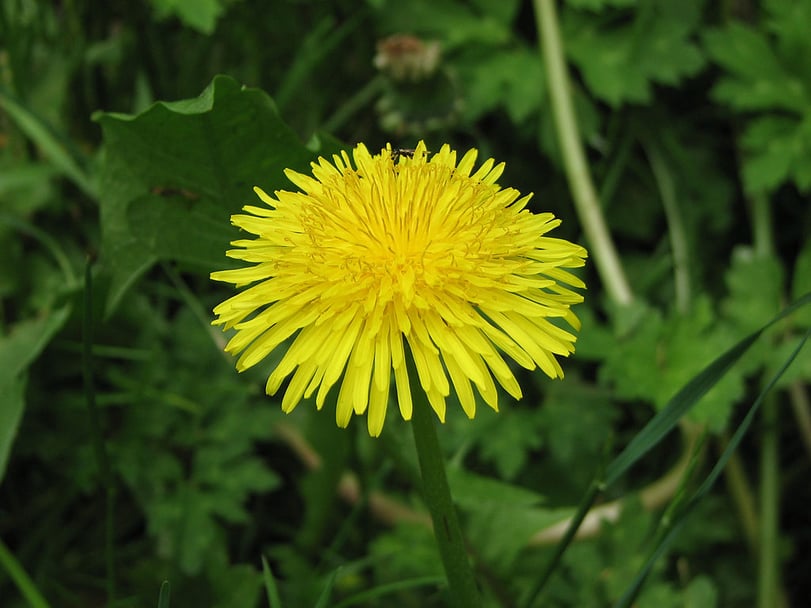
Because the dandelion is a perennial weed, they may die off above the surface but will come back if not treated with an effective weed control product.
While this weed is most prevalent in the springtime, they will reappear in the fall. Seeds can also blow around and spread, if not treated. In no time, the bright yellow flowers can take over your lawn!
Fortunately, this is one of the easier weeds to control with selective, liquid broadleaf control applied during active growth.
2. Chickweed
Chickweed is a common ingredient in birdseed and gets its name as a result of that purpose.
This weed is characterized by small white flowers with fleshy leaves that have an egg-like appearance to them. It grows best in shade and thinner areas of the lawn, often forming thick, dense mats.
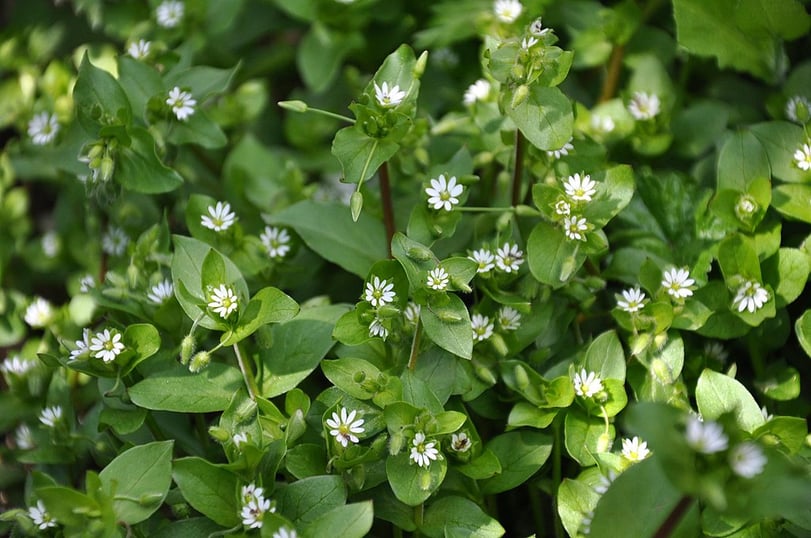
As a winter annual weed, chickweed germinates in the winter and is therefore one of the first ones seen in the spring. It will persist and drop seeds until hot temperatures in the late spring cause it to die off.
It is best treated with selective, liquid broadleaf weed control material before it dies off.
3. Henbit & Purple Deadnettle
While slightly different (but close enough that we grouped them together), henbit and purple deadnettle are two common spring weeds in the mint family.
Like other members of the mint family, they are characterized by their square stems. Both of these weeds first develop in the fall and complete their growth in the spring.
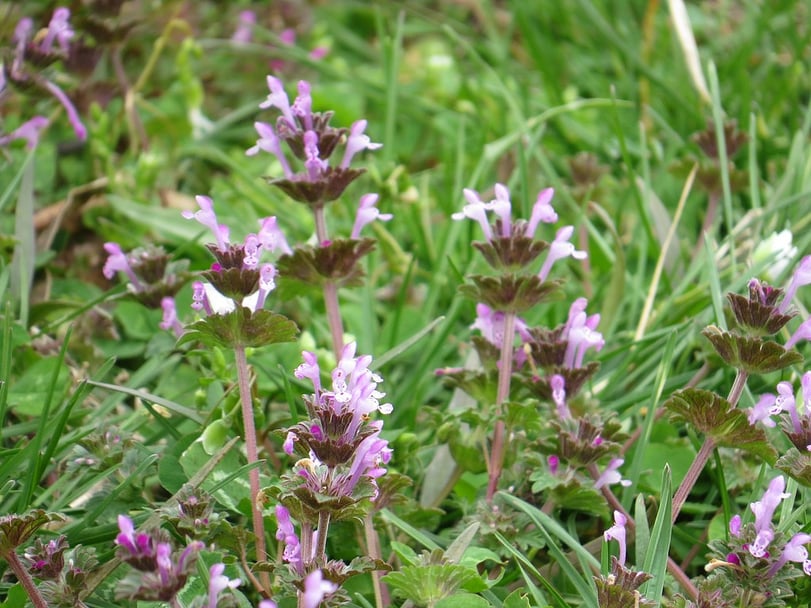
Considered winter annuals, this is another set of weeds that will make an early appearance in your lawn.
Henbit and purple deadnettle thrive best in thinner areas of the lawn and are relatively easy to control if treated early with selective, liquid broadleaf weed control material.
4. White Clover
This perennial weed grows low to the ground and is therefore often found in lawns. It is a white-flowering weed that grows in a creeping manner, meaning it develops roots anywhere that a stem node touches the ground.
White clover can spread rapidly, particularly if you have a lawn with sparse areas where it doesn’t have to compete with healthy grass in order to thrive.
White clover prefers soil with a low pH, which is an environment that is not best-suited for grass to thrive.
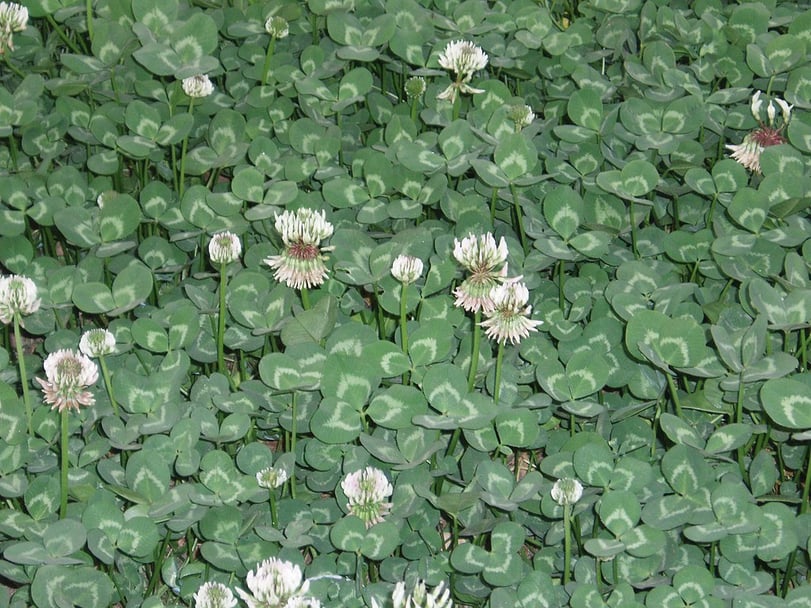
When white clover spreads and develops its flowers during the summer, it can attract bees to your yard, making it risky to run barefoot without getting stung.
Like some of these other weeds, it is relatively easy to control with selective, liquid broadleaf weed control, though severe cases may require a repeat treatment.
5. Wild Violet
While the name “violet” actually covers a variety of plants, wild or common violet is among the broadleaf spring weeds that have a resilient root system and can be difficult to control.
One of the reasons for this is the fact that their leaves have a waxy coating which makes it difficult for some spring weed control products to easily get rid of them.
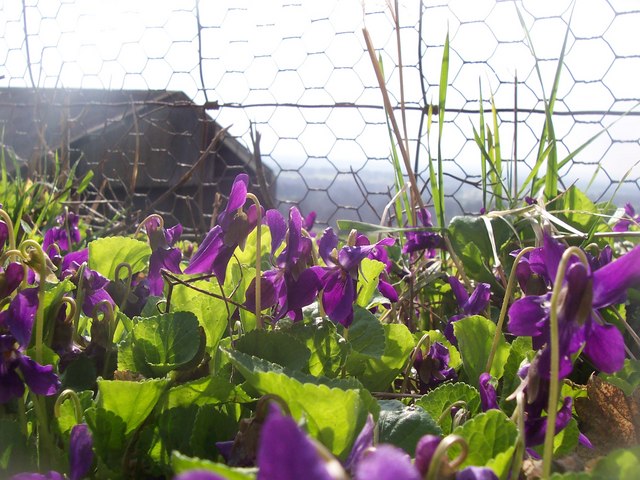
Certain products will knock wild violet back but a long-term strategy, including spraying multiple times each year (particularly in the fall when certain products are able to be used in cooler temperatures) will give you better control.
While it can take a couple years to really get good control over this difficult weed, the sooner you act, the better shape you’ll be in.
6. Corn Speedwell
This upright, clumping weed produces small purple flowers in the spring. It is a winter annual and therefore one of the first weeds that you’ll see come spring. It can be difficult to control given its hardiness.
It is low-growing and thrives in thin turf and has even adapted to growing in compacted soil.
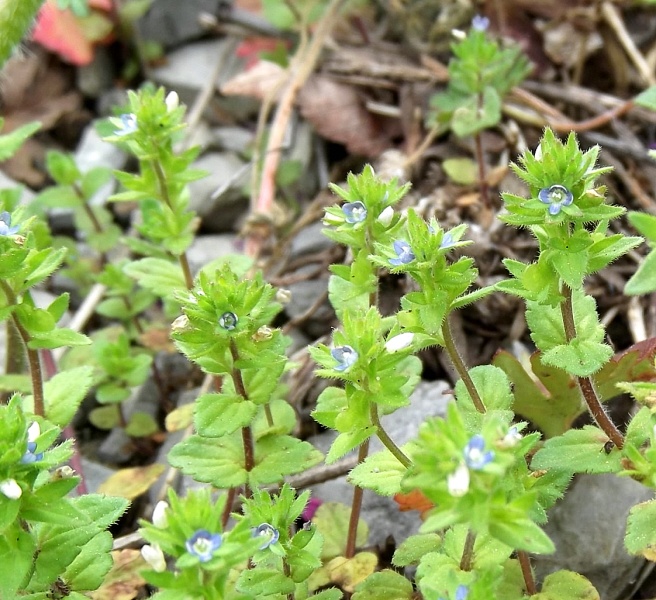
Therefore, producing a healthy, thick turf is one of the best ways to prevent it from growing in the first place.
7. Wild Garlic
Wild garlic emerges from bulbs (which can persist for several years) and has a thick grass-like appearance.
It forms dense clumps and can thrive in a variety of soil conditions.
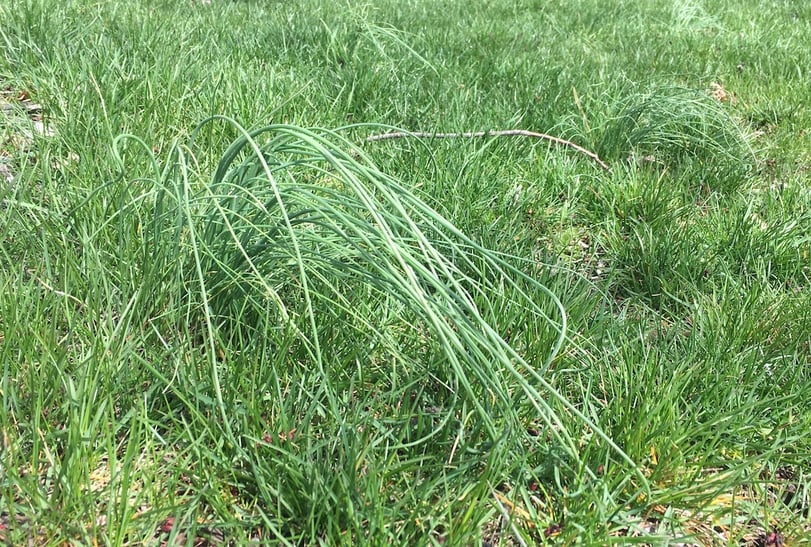
When lawns are thin and compacted, it can spread more rapidly. Just one wild garlic plant can produce dozens of seeds that will grow into more weeds.
Wild garlic hates hot weather and will naturally wilt as the season heats up. But starting selective, liquid weed control in the mid-spring will help get it under control earlier.
8. Groundsel
Groundsel (also commonly referred to as “old-man-in-the-spring”) is a flowering weed of the daisy family. It can grow quite tall (up to 18 inches) if left undisturbed.
As a winter annual weed, groundsel germinates in the winter and is one of the first weeds to pop up in the spring.
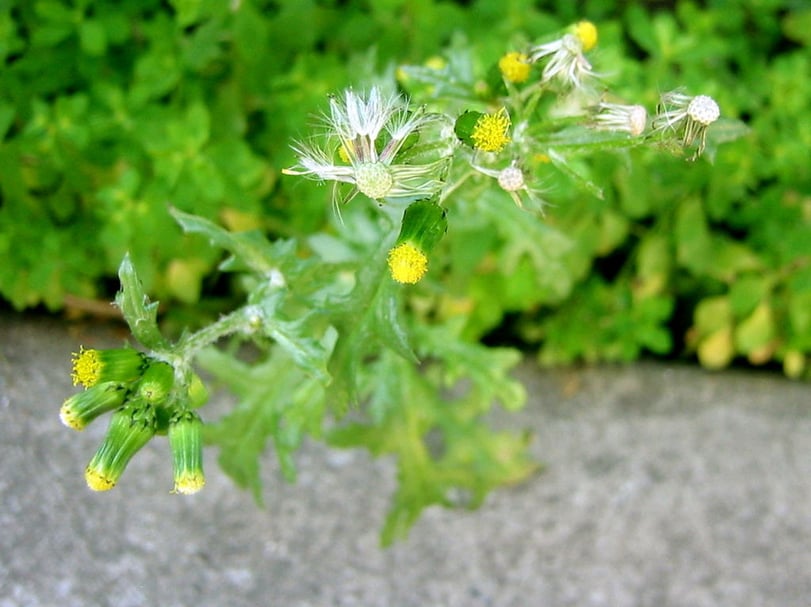
It will persist and drop hundreds of seeds until hot temperatures in the late spring cause it to die off. It can be controlled relatively easily with selective, liquid broadleaf weed control products.
Spring Weed Control
As we mentioned, spring weed control can be particularly challenging and a huge source of frustration. Therefore, working with a lawn care company that executes a variety of weed control tricks is essential.
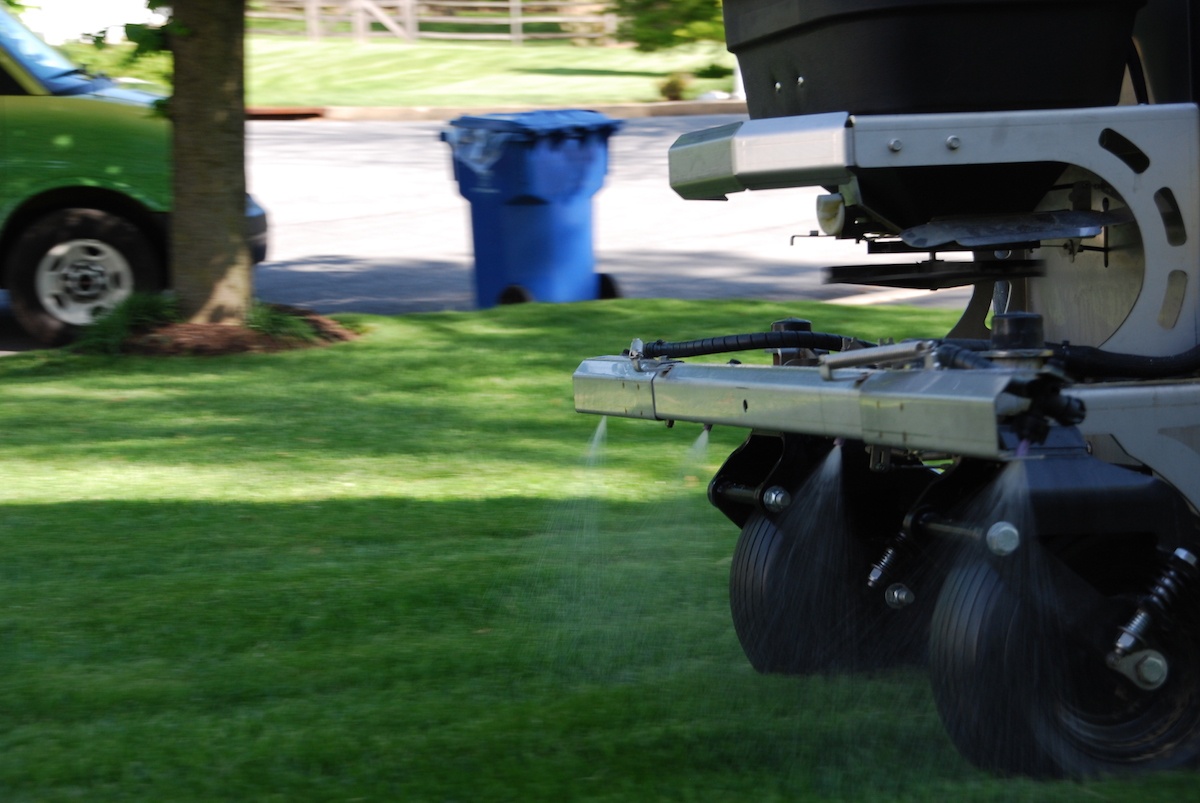 While a lot of homeowners just turn to the process of spring weed and feed (the act of applying a granular fertilizer and weed killer to the lawn), there is so much more involved in the process than that.
While a lot of homeowners just turn to the process of spring weed and feed (the act of applying a granular fertilizer and weed killer to the lawn), there is so much more involved in the process than that.
It’s important to identify the specific weeds on your property and then devise a plan with specific materials that will work best.
In addition to a customized plan, you also want a lawn care program that focuses on good year-round soil health. This is the true secret to solving weed control problems.
Since weeds often thrive best in thin lawns, nothing crowds out weed growth like thick grass.
This can be achieved with good lawn care practices including aeration and overseeding, which are two of the best things you can do to produce a healthy, thriving turf.
The Best Approach to Spring Weeds
It’s plain to see that spring weed control is about more than just throwing down some product and assuming that it will work on everything.
It takes a detailed plan. As a result, it’s important to find a lawn care company that is going to take a customized approach to maintaining your lawn and controlling spring weeds.
This is where your decision-making can really have a big impact. Your choice of the right plan for your lawn can be the difference between being able to fully enjoy it or being burdened by troublesome weeds. You’ve already taken the first steps toward better understanding spring weeds and how to control them and that is a smart move toward a healthier lawn. Now you just have to get a plan in action.
By selecting a lawn care company that will take a customized approach to your lawn, while also focusing on improving the overall health of your turf grass, you’ll no longer have to worry about weeds. Don’t let the weeds win. The solution to a healthier lawn is out there.
With the right care for your lawn, you’ll gain valuable peace of mind. If you’re interested in having your lawn inspected and its health assured, contact us for a free quote or give us a call at 833-JTE-TREE.
Image Sources: dandelion, chickweed, henbit, white clover, wild violets, corn speedwell, groundsel



